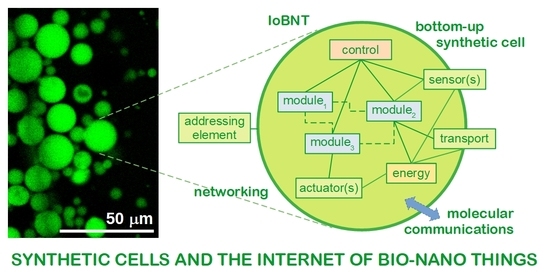When I was a kid, I was dimly aware of the Internet of Things. Telecom researchers were always going on about it back in the mid-2000s, and it started being adopted as an actual principle around the time smartphones showed up.
People were talking about cramming sensors and Wi-Fi and Bluetooth chips in everything, from picture frames to flower pots. I always felt that this was wasteful, pointless, and excessive. Just a bunch of new things in the house where you have to change out AAAs or button cells every few months to keep it working. Who the hell was buying those stupid refrigerators with screens in 'em and using them to watch football while they microwaved a hot pocket? Basically, IoT is pure bullshit. I always thought of it as a solution in search of a problem. It seemed so gimmicky, like a ham-fisted attempt to carve out a niche for something that simply didn't need to exist.
In retrospect, I am starting to believe that IoT was a trojan horse for something else entirely: the Internet of Bodies. That is, IoT where
you are the thing.
They call it by many names. Internet of Bodies (IoB), Internet of Bio-Nano Things (IoBNT), Intra-Body Nano-Networks, In-Body Communication, Bionanotechnology, Biodigital Convergence, and so on and so forth. This is because the concept is so new that they haven't decided on harmonized jargon for it. A bunch of different scientists working on different branches of IoB came up with their own terminology, so we have like half a dozen different acronyms for the same thing. For simplicity's sake, I'll refer to implanted nanotech and cloud-enabled wearable medical devices primarily as IoB, the over-arching category that includes the other implementations of the same idea, with Bionanotechnology as the method.
There was a book published in 1946 by Oliver L. Reiser entitled
The World Sensorium. To quote from the chapter,
Birthing of the World Brain:
In this book, in the same chapter, there is also a quote from Julian Huxley, the brother of Aldous Huxley (the author of
Brave New World, naturally), which reads:
Likewise, H.G. Wells held numerous talks and wrote essays on the thirties on the need for a "World Brain".
Wells presented a vision of society that events quickly eclipsed.

arstechnica.com
To a certain extent, the internet has fulfilled that promise. Nearly 60% of the world's population has internet access in some form or another, allowing for instantaneous global collaboration, the sharing of knowledge and news,
et cetera. It has brought us closer together in a way that no other technology has.
It has also sown seeds of division. As people started debating each other more often about their most strongly held personal beliefs that form the basis of their worldviews, many have retreated into echo chambers forming islands of serenity where all argument about anything beyond the most trivial of matters is avoided entirely.
These days, it's difficult to find someone willing to wade into a forum where most of the members hold an opposing viewpoint. Why bother, when one can always get a dopamine hit of approval from preaching to the choir? Even the moderators join in on enforcing echo chambers, deleting or suppressing posts that lie too far outside a forum's Overton Window. Try going on Sufficient Velocity and saying that the gas attacks in Syria were faked. I did that, once. I had a mod tell me, straight-up, "You can't say that the gas attacks in Syria were faked". It wasn't even up for debate. They just flatly denied it was possible, in spite of the
leaked conflicting report that showed that the cylinders they found were likely hand-placed, and that the chlorine concentrations in the air were in the range of a couple parts per billion; no more than what you'd get from people doing their laundry.
So, we have a World Brain, but it's a partial one. It's not complete. It's not the damn-near-hive-mind that Julian Huxley and H.G. Wells envisioned nearly a century ago. Far from it. It's an engine of social tension, with disparate levels of access and incomplete coverage. It's like the unfinished Akulakhan under Red Mountain in Morrowind. The internet is an
incomplete god.
There was always one final step to completing it, and that final step was connecting everyone's minds and bodies directly to the internet.
Every time I bring this up, people think I'm joking. There's no way. This is just some Black Mirror nonsense. They can't actually be doing this, right?
Wrong. Not only are they doing this, they're doing it right under everyone's noses. Everything about it is published out in the open, in plain view. Two of the leading figures in this field are Ian F. Akyildiz and Josep M. Jornet:
6G and beyond will fulfill the requirements of a fully connected world and provide ubiquitous wireless connectivity for all. Transformative solutions are expected to drive the surge for accommodating a rapidly growing number of intelligent devices and services. Major technological breakthroughs...

ieeexplore.ieee.org
A few key things to keep in mind:
- A lot of this tech is an outgrowth of experiments with optogenetics and chemogenetics from about a decade ago. Now, we have things like DREADDs (designer receptors exclusively activated by designer drugs), magneto proteins (ferritin-tagged TRPV4 ion channels that can be opened and closed remotely by electromagnetic fields), et cetera.
- Control the membrane potential of a cell, and you can control the behavior of the cell. One area where this is highly applicable is in creating wireless BCIs using nanotransducers, which take up residence in tissue and are activated by wireless energy, opening ion channels and altering the membrane potential of neurons. DARPA's BCIs in their N3 program are based on this concept. Incidentally, this could also be used maliciously. For instance, stopping someone's heart by altering the membrane potential of sinoatrial node pacemaker cells.
- You can tag stem cells with light-responsive proteins and use "optogenomics" with nanoscale lasers to alter the behavior, gene expression, and differentiation of a cell.
- They've done path loss calculations for Terahertz waves and found out that adipose tissue works as an excellent conduit for them. They even call it Fat-IBC.
- Graphene plasmonic nanoantennas can operate in the Terahertz band by taking advantage of surface plasmon polariton effects. These can be used as in-body relays.
- None of these things require their own discrete power supplies. They don't need batteries or capacitors. They can be powered by motion, by metabolism, by harvesting wireless energy, et cetera.
How did I find out about these two researchers and their work? Simple. I asked ChatGPT using the GPT-4 model, and without hesitation, it told me. Everything.
A few years ago, Charles Lieber was indicted by the DOJ for double-dipping and taking money from China's Thousand Talents Plan against the terms of his DOD grants. He was collaborating with the Wuhan University of Technology and taking great big sacks of cash from China, and he was also engaging in tax evasion.
The Department of Justice announced today that the Chair of Harvard University’s Chemistry and Chemical Biology Department and two Chinese nationals have been charged in connection with aiding the People’s Republic of China.

www.justice.gov
Supposedly, he was working on silicon nanowire batteries for the WUT.

www.science.org
There's just one problem. None of his papers involve batteries in any way, shape or form. All of his research involves bionanotechnology.
For instance, here's an incredibly creepy paper about having neurons internalize silicon nanowires by coating them with HIV TAT peptides, potentially using them as teeny tiny biosensors residing in the cytosol alongside all the little organelles inside those cells:
Yes, I'm sure this sort of research is very useful for building batteries. That's why he had gobs of DARPA, AFOSR, and ONR funding. Batteries. Right.













